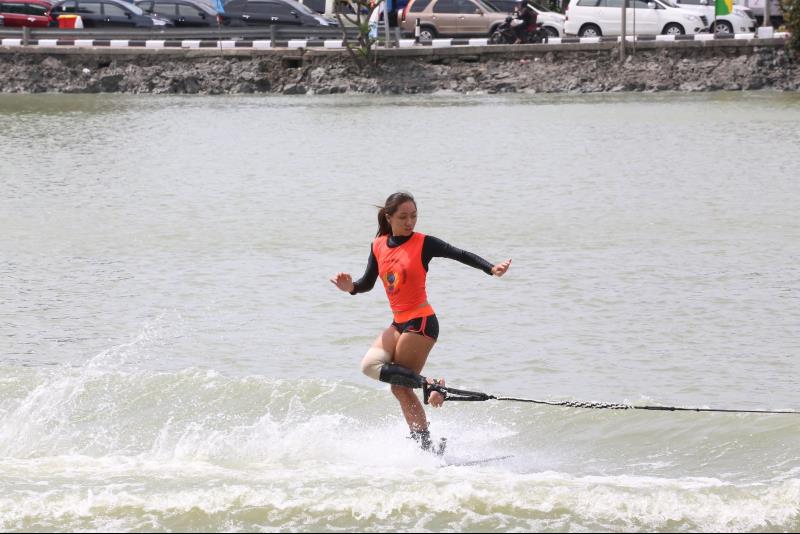Water Skiing movements: Tricks

Image credit: Geoffrey Kee
Trick water skiing is considered to be more technical than slalom and jump. To carry out these tricks, participants have to use special skis. Their skis are comparatively smaller and oval in shape. Additionally, while slalom skiers can only use one ski and jump water skiers are required to use two skis, trick skiers have the option of using either one or two skis. Typically, beginners prefer two skis before changing to one ski as they get more experience.
Besides being smaller, trick skis are not allowed to have fins on the bottom, although grooves and rails that are less than a quarter inch in length are allowed. The bottom of these trick skis are also usually smoother than slalom and jump skis, in order to allow easier turns over the water.
According to the International Water Ski Federation (IWSF), trick skiers are allowed two passes through the course, where they will perform any tricks they want. Unlike slalom skiing, the speed of the towboat will not increase throughout the course, and skiers are given the option to decide what speed they want the towboat to travel at. This speed will then be constant throughout the entire course.
Two buoys will be placed approximately 230 meters apart, which marks the start and end of the trick course, and the skier can choose which point to enter the course. Each pass lasts 20 seconds, with the first pass designated for hand tricks such as turns, rotations and flips. The second pass is for toe tricks including turns and rotations while the foot is the only part of the skier that is attached to the handle. The course ends if the skier falls into the water at any point. If the skier falls during his first pass, he has a maximum of 30 seconds after falling to get ready for the towboat to take him to back to start his second pass.
Unlike jump water skiing, the skier will be scored according to the style and tricks he performs instead of the distance. However, only tricks listed in IWSF rules will count towards a participant’s score, and the skier must remain in a skiing position throughout the trick. The trick will also not be counted if the skier fails to complete the trick before the end of the pass, or if the skier falls at any point while executing the trick.
To receive the latest updates on the happenings in the Singapore sports scene, or to find out more about some of the latest programmes on offer at ActiveSG, like our Facebook page here.





![ActiveSG Academies and Clubs Logo (Solid Colour)[8647]](https://www.activesgcircle.gov.sg/hs-fs/hubfs/ActiveSG%20Circle%202023Theme/images/ActiveSG%20Academies%20and%20Clubs%20Logo%20(Solid%20Colour)%5B8647%5D.png?width=150&height=65&name=ActiveSG%20Academies%20and%20Clubs%20Logo%20(Solid%20Colour)%5B8647%5D.png)



-01.png?width=200&height=141&name=Team%20Singapore%20Logo%20(Red)-01.png)



